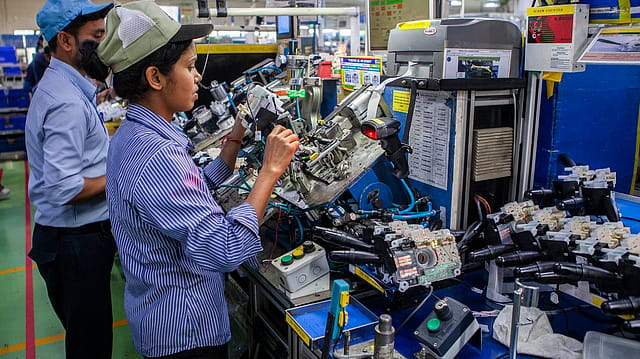Margins of auto ancillaries likely to return to pre-Covid levels in FY23: ICRA
ADVERTISEMENT

Margins of auto ancillaries are expected to witness an improvement in the financial year 2022-23, with easing of commodity pressure and supply-chain issues, according to rating agency ICRA.
The operating margins are likely to return to pre-Covid levels of 10.5-11% in FY23 compared to 10% in FY22.
While cost pressures are likely to continue in the first half of the current fiscal, ICRA expects a year-on-year improvement of 50-75 basis points in operating margins in FY23.
While the sharp rupee depreciation vis-a-vis the U.S. dollar could impact the cost structure of auto ancillaries with high import dependency, the impact on margins will be driven by the ability to pass through the same, ICRA says.
Auto ancillaries have not been able to pass through the sharp increase in commodity prices in the last 3-4 quarters entirely, resulting in a decline in gross margins, according to the rating agency.
However, from Q2 FY23, gross margins are likely to benefit from the recent correction in metal prices.
Ancillaries are looking at enhancement of product portfolio and increased value addition per vehicle. "The new products targeted are largely EV agnostic or for EVs. Further, companies have adopted consolidation of delivery and optimization of routes to the extent possible to reduce freight expenses. Increased usage of power from renewable sources, factoring arrangements to reduce working capital requirements and other measures like improvement in output per employee through automation and technology enhancement are likely to support margins going forward," it adds.
January 2026
Netflix, which has been in India for a decade, has successfully struck a balance between high-class premium content and pricing that attracts a range of customers. Find out how the U.S. streaming giant evolved in India, plus an exclusive interview with CEO Ted Sarandos. Also read about the Best Investments for 2026, and how rising growth and easing inflation will come in handy for finance minister Nirmala Sitharaman as she prepares Budget 2026.
ICRA expects its sample of 49 auto ancillaries with aggregate annual revenues of close to ₹3 lakh crore to grow by 8-10% in the ongoing fiscal, supported by stable demand and gradual easing of supply-chain issues.
Stable demand environment from the OEM (original equipment manufacturer) segment coupled with steadily increasing premiumisation of vehicles, focus on localisation, improved exports potential and EV opportunities (resulting in higher content per vehicle) will translate into healthy growth prospects for auto component suppliers, the rating agency says.
"Domestic OEM demand is likely to remain stable in FY2023. Further, demand for public and private transport is expected to remain healthy with increase in mobility, supported partly by reopening of schools and offices. This, along with improvement in economic activity and freight movement will aid replacement volumes in the near term," says Vinutaa S, vice president and sector head, ICRA.
"The replacement segment is also expected to benefit from likely postponement of new vehicle purchases due to increase in vehicle prices with cost inflation and elongated waiting periods, especially in the PV segment, because of supply-chain issues witnessed by OEMs on account of semiconductor shortage," Vinutaa adds.
ICRA expects auto component suppliers to gradually increase their capital expenditure outlay in FY23 to 6-6.5% of operating income.
The recently-announced PLI scheme will also contribute to accelerating capex over the medium-term besides investments by new entrants in the EV segment, says ICRA. The capex is expected to hover around 7-8% of operating income in FY24 and FY25, which is over ₹20,000 crore each for FY24 and FY25.
